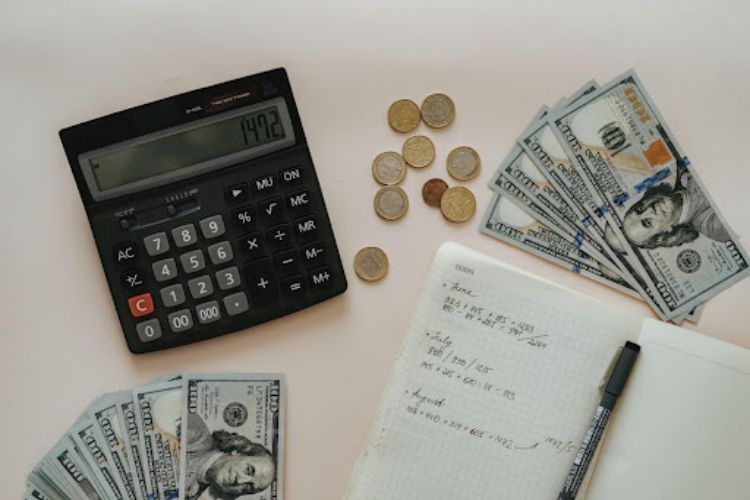
Saving money is challenging. However, it does not have to be challenging. Whether you are saving for a house in Canada or beginning a rainy-day fund, it may be tough to set aside a percentage of your pay each month to put toward savings.
Every time you enter a store, do you have the desire to delve? Whether you enjoy books, clothes, or household goods, we’re all prone to the urge to purchase something we might not truly need.
The basic aspect of the rule is that you must wait 30 days before using cash or secured credit cards in Canada to create a transaction. You’ll probably decide you don’t need it or ignore it.
Even if you try to keep your spending in check, impulsive purchases can quickly deplete your bank account. It’s unnecessary to overlook everything on your wish list to save money. One technique you might use to control your spending is the 30-day rule.
This guideline might enable you to spend more mindfully if you follow a simple thought process.
Here’s how waiting 30 days can help you save more money.
Table of Contents
The 30-Day Rule: What Is It?

Before indulging in more strategies to save money by applying the 30-day rule, first, you need to understand what exactly it is.
A method called the 30-Day rule will help you save more money while decreasing your impulsive spending. Ultimately, it helps you keep more of your money by giving you full time to reconsider all your impulsive decisions.
Read on and why the 30-day rule works for different spending urges!
Point To Ponder
Simple: if you find anything you wish to buy, wait 30 days before making the purchase. If you still feel like purchasing that, go ahead.
If you had not suppressed that feeling, you would have saved yourself the expense if you realized you didn’t truly need it or perhaps forgot about it.
The 30-Day Rule: Functions & Importance
Let’s be honest here, and we have all made purchases that we later realized were a waste of money, right? Even worse when money is limited. Most of the time, we cannot return the item to the store. Therefore, we are left to deal with the consequences.
This rule functions by assisting you in controlling the need to satisfy your want for instant gratification, which is the urge to accept a future benefit in exchange for a less satisfying but more immediate benefit.
You may occasionally find that you didn’t need something as much as you thought. In certain circumstances, you’ll frequently save money by refraining from purchasing something that, after all, you didn’t want.
Here are some extra money-saving ideas to think about:
- You might keep track of how effectively you’re accomplishing your savings plans and adjust your spending plan until you find the methods that work best for you.
- Do you wish to pay yourself initially? You may accomplish this by setting up an automated transfer of funds from your paycheck into your savings account. It will help you to save more.
- On the other hand, if there are luxury items you truly want to buy but they are outside of your current spending plan, think about getting a second job to pay for them.
Of course, following your rules and waiting the whole 30 days is required for the guideline to work. But if you stick to the plan, you’ll almost always find that this method saves you money.
Importance Of This Rule
Your attitude toward spending and saving can be changed by using this technique.
It can help you stick to a budget or possibly even help you make significant progress in paying off debt. Most importantly, it may improve your lifestyle by reducing the need for impulsive purchases.
Tips For Sticking To The 30-Day Rule
Here are some ways to help you stick to the 30-day Rule:
-
Make A Plan And Track Your Progress
Individuals in companies who create goals and monitor their progress say they typically succeed in achieving them, which is a higher success rate than people in businesses who don’t track anything.
Additionally, personal finance reflects this. So it may be helpful to the overall saving process to check in periodically to see how well you are doing towards a no-impulse-spending target.
-
Involve Your Friends And Family Members
Each person enjoys a challenge. Why not hold a contest, and to make it more fun, you can consider this a game among family members and friends to determine who can save the most or spend the least over a certain length of time?
Everyone is held accountable in this manner, and the 30-Day Rule is transformed into a pleasant game that dismays impulse buying. This may be more enjoyable and may encourage you to keep to your strategy without trying to exert effort.
-
Allow Yourself Enough Time To Adjust
All of us are human. We also make errors from time to time. If you do the 30-Day challenge for the first time, you might not succeed. That’s OK, too.
This should serve as a lesson to assist you in quitting impulse purchases and making more informed selections about your purchases.
Consider Utilising Several Budgeting Methods

A strategy for you might not be ideal for someone else. For example, the envelope technique of budgeting could be successful for certain people.
Here, money is placed in envelopes designated for various spending categories. Some people could use various personal finance websites, such as those that track costs. The key is to settle on a method that seems natural to you.
This guideline might not apply if a purchase is an emergency requirement because thirty days can be a very long period.
The same holds for limited-time offers like discounts provided that you have planned for the item of interest and that the lowered price and goods are in line with your intended purchase.
Saving for retirement is especially essential since people live longer. Estimating your retirement income needs and beginning your savings early are the keys to a successful retirement.
How To Use The 30-Day Rule
- Whenever you need to buy something, whether it’s a new sofa set or a car, resist the impulse and leave the store.
- Spend money if there are more benefits than drawbacks. If not, you can use the investing or saving money strategies.
- Please write down the item, its cost, and the date. Your goal is to consider the impact the purchase might have before making a quick decision. This applies in particular to more expensive goods.
- This list has to be kept in plain sight. You may put it on your desk at work or on your refrigerator. A location where you will view it as frequently as possible.
- Consider if you still need this item for the following 30 days. Don’t buy anything, though, just yet. This will assist you in considering your spending plan, associated expenditures, and return on investment for that particular item.
- You can decide once the 30-day period has passed and the deliberation process is complete.
Note: One thing about this strategy is that it does not prevent shopping at all. Once the 30 days are over, there is no guilt if you still want to buy that item.
The Four-Step 30-Day Savings Rule
Applying the 30-day savings rule in four phases to increase your money and create a good budget will help you save more.
-
Create A Savings Account
One of the best things about the 30-day savings rule is that it allows you to save money as you wait to decide whether or not to purchase a new pair of shoes or a smartphone.
Putting your money in a savings account can help you earn high interest while you’re deciding what to do with it, and moving it out of your checking account makes it easier to save. Of course, you could leave it in your regular checking account while you make your choice.
-
Credit Card Usage
According to research, people who use credit cards smartly are able to save more. On the other hand, you may apply the 30-day Rule to credit card purchases if you know how to handle your credit cards responsibly.
-
Combined With A Budget
Utilizing a budget in conjunction with the 30-day delay can help you reach your financial goals more quickly because the 30-day delay’s entire purpose is to help you save money.
For instance, you may progressively lower your monthly budget if you wish to decrease impulsive buying. It also works the other way around: if you set up a tighter budget, you’ll be more likely to apply the rule more often.
If you plan your budget wisely you will be able to save more, you and your spouse should first decide what is essential to you both as a couple and individually.
Consider a scenario where you want to travel while your partner prefers to live in a comfortable home with excellent furnishings and loads of decoration. You can discover that one of you is more concerned with material stuff than the other is with experiences.
-
Identify Impulse Purchases
Not every transaction is subject to the 30-day regulation. Food, rent, and vehicle insurance are examples of essentials that are exempt from the limitation.
Even if you know exactly what you want, it’s not the best idea to put off going out to dine or attending a movie for 30 days.
The guideline is more effective when applied to purchases that can wait and are not preplanned (e.g., clothes, shoes, home decor).
For instance, it could be a good idea to mark your calendar and go back the next month if you find yourself looking for offers online or window shopping at the mall.
Because impulsive spending typically involves smaller purchases, which may not appear like a significant price, it is frequently difficult to identify.
However, these little purchases pile up over time and might add up to a significant amount of money.
The 30-day Rule encourages you to consider your purchases before adding them to your physical or online shopping cart, which can help you curb impulse buying.
FAQ’S
-
Why Is Impulsive Buying So Common?
You are not the only one who struggles to control your impulsive spending. For several reasons, many people suffer from impulsive purchases. People will always shop and spend money on impulsive purchases. Three out of every four purchases are made on impulse by each customer.
-
What can you do to stop making impulsive purchases?
The 30-Day Rule teaches your brain to substitute the thrill of buying with the delight of delayed gratification, the sense of having worked hard for the thing.
-
How to manage your finances while making impulse purchases?
You can prioritize the things you want to buy if you spread your impulsive spending across 30 days. This practice encourages thoroughly examining the available budget rather than blowing the budget entirely, and the effective financial hacks will help you in managing your finances.
Final Thoughts
Controlling your impulsive spending is a critical step on the road to financial success. The 30-Day Rule can appear extremely simple, but training your brain takes some effort.
Life should be appreciated, even though it is not advisable to lead a life devoid of joy. You can manage your finances and save for retirement while still doing the activities you enjoy if you stick to a plan.
You may differentiate between your wants and needs using the 30-day Rule, which can be a great strategy for saving money.
It can assist you in improving your attention and self-control regarding your impulsive shopping behavior, staying out of debt, and achieving any financial objectives you may have.
Start small and increase your efforts gradually, and you’ll soon be confidently shopping while saving money.
Start Today!






